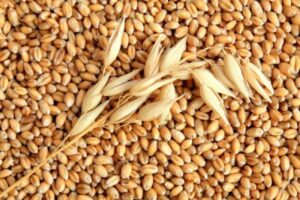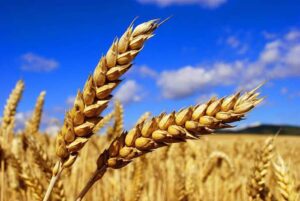
Barley exports from Ukraine between July and November of the 2025-2026 marketing year (MY, July-June) amounted to 1.2 million tons, which is 37% less than shipments during the same period of the 2024/25 MY and represents 46% of the projected export potential of grain, according to the information and analytical agency “APK-Inform”.
Experts noted that in November this year, barley exports from Ukraine amounted to 78.2 thousand tons, which is 50% less than in the same period a year earlier.
The main importers of Ukrainian grain in July-November were China, which purchased 42% of all shipments, Turkey with a share of 20%, and Libya (12%). At the same time, Turkey increased its imports of Ukrainian barley by 6.4 times in 2025/26 MY, purchasing 233 thousand tons compared to 36 thousand tons last season. Meanwhile, China and Libya reduced their barley purchases by 31% and 37%, respectively.
“The export potential of Ukrainian barley in 2025/26 MY is estimated at 2.5 million tons, which is 11% higher than last MY. The gross grain harvest is expected to reach 5.3 million tons,” according to APK-Inform’s forecast.

As of November 10, Ukrainian barley exports amounted to almost 75,000 tons, with grain prices rising, according to the analytical cooperative “Pusk,” created within the framework of the All-Ukrainian Agrarian Council (VAR).
“Barley is showing positive dynamics — prices rose by $2-4, or about 100-150 UAH per ton, over the week. On average, the conditional price for barley on the domestic market is about 10,600 UAH/ton. The market was supported by spot export sales, in particular to the Middle East and Algeria,” analysts explained.
At the same time, experts predict that the current growth may be short-term.
“Traders are now looking for deliveries until November 15-20 at the latest. After that, demand may disappear. That is, the $5-7 that the price per ton has gained may disappear just as quickly. The market is currently overheated locally, and barley remains a relatively expensive feed grain,” analysts noted.
Despite this, a slight increase is still possible in the coming days.
“By the end of this week or early next week, we may see further growth. Barley is likely to add $1-2 per ton, and accordingly may reach a conditional level of 10,800 UAH/ton on the domestic market,” Pusk concluded.

As of October 28, 2025, Ukrainian farmers had sown 5.349 million hectares of winter crops, which is 72% of the projected area. A year earlier, on October 22, 5.7 million hectares had been sown.
According to data on the website of the Ministry of Economy, Environment, and Agriculture, winter wheat crops increased to 3.858 million hectares (4.1 million hectares) over the week, barley — to 382,200 hectares (486,100 hectares), rye – to 63.2 thousand hectares (66 thousand hectares) .
“The leaders in grain crops are Dnipropetrovsk, Mykolaiv, and Kirovohrad regions. Poltava, Ternopil, and Chernihiv regions have already completed sowing,” the ministry said.
According to its data, as of October 21, rapeseed has been planted on an area of 1.05 million hectares (last year – 1.05 million hectares).
“The largest areas are in Vinnytsia, Odesa, and Khmelnytskyi regions. Currently, farmers in 14 regions have completed the sowing of winter rapeseed,” the report says.
The Ministry of Economy previously published forecast figures for the area sown with winter crops for the 2026 harvest. The ministry expects Ukrainian farmers to reduce the area sown with winter crops by 5.1% to 5.368 million hectares. At the same time, the area under winter wheat will be reduced by 4.4% to 4.778 million hectares, winter barley by 2.7% to 576,100 hectares, and winter rapeseed by 5.5% to 1.114 million hectares. At the same time, winter rye crops will increase by 7.6% to 69.3 thousand hectares.

As of September 29, Ukraine exported 235,000 tons of barley, despite the absence of supplies to China. Export rates and barley prices were supported by a tender in Turkey, according to the analytical cooperative “Pusk,” created within the framework of the All-Ukrainian Agrarian Council (VAR).
“Last week, Turkey’s state procurement company announced a tender for 255,000 tons of barley. This factor became the main driver of the market, ensuring a temporary increase in prices. Currently, the conditional prices for Ukrainian barley are $215–217 per ton, or 10,150–10,250 UAH/ton in ports. There is almost no support for prices on the domestic market, as barley remains more expensive than other feed crops,” analysts noted.
Experts believe that thanks to the Turkish tender, the market may maintain relatively high price levels for another week, with a possible increase of $1–2 per ton. However, after the tender activity ends, the price may return to the range of $210–214 per ton.
“In October, the barley market will traditionally be guided by wheat price dynamics. If the wheat market continues to show growth prospects, barley will also gradually rise in price,” Pusk concluded.

As of July 18, farmers harvested 7.226 million tons of early grains and legumes from an area of 2.355 million hectares, compared to 2.62 million tons from 919.9 thousand hectares a week earlier, the Ministry of Agrarian Policy and Food reported.
The ministry noted that 4.671 million tons of wheat have already been harvested (against 1.238 million tons a week earlier) from 1.504 million hectares (434.8 thousand hectares), 2.182 million tons of barley (1.153 million tons) from an area of 660.6 thousand hectares (364 thousand hectares), and 362.9 thousand tons of peas (225.1 thousand tons) from 170.8 thousand hectares (119.7 thousand hectares).
Odesa region is the leader in the harvest of grains and pulses, harvesting 2.02 mln tonnes from 722.1 thou hectares, Mykolaiv region – 1.173 mln tonnes from 488.7 thou hectares, Kirovohrad region – 963 thou tonnes from 238.6 thou hectares.
Rapeseed is harvested in 14 regions. The harvested area is 614.1 thsd tonnes (290.1 thsd tonnes) from 360.3 thsd ha (178.9 thsd ha).
As reported, as of July 19, 2024, agrarians of all regions of Ukraine harvested 15.7 mln tonnes of new crop from 4.4 mln ha, including 10.3 mln tonnes of wheat from 2.627 thou. hectares, barley – 3.1 mln tonnes from 824.2 thou hectares, peas – 319.3 thou tonnes from 154.7 thou hectares, rapeseed – 1.8 mln tonnes from 779.1 thou hectares, soybeans – 0.3 thou tonnes from 0.2 thou hectares, millet – 80 tonnes from 50 thou hectares.
wheat, barley

In Ukraine, the 2025 season is expected to see a significant decrease in gross barley harvest due to a reduction in acreage and the impact of weather risks, according to the analytical cooperative Pusk, established within the framework of the All-Ukrainian Agrarian Council.
“This year, we expect a barley harvest of about 5.1-5.3 million tons, which is 40% lower than the pre-war level. This means a significant reduction in supply at the start of the season, and the market is gradually beginning to reflect this in prices,” analysts said.
Experts pointed out that demand for Ukrainian barley is increasing, especially from China, which is returning to the market, and Southern European countries. This creates the conditions for stabilization and even an increase in export activity.
“China has already contracted about 500,000 tons of Ukrainian barley for July-August, and European importers, in particular Spain and Italy, are also stepping up purchases. Traders are seeking to secure their volumes in advance, given the limited prospects for domestic production,” analysts said.
They also see potential for price increases in the second half of the year, especially if weather risks are confirmed and the harvest turns out to be even lower than forecast.
“At the start of the season, the price model shows a level of $200-205/tonne on a CPT basis, but by December-January, we can expect to see $230-240/tonne. The market is already showing a willingness to pay more for limited supplies of high-quality barley,” Pusk predicts.
© 2016-2025, Open4Business. All rights reserved.
All news and diagrams placed on this Web site is made for internal use. Its reproduction or distribution in any form are welcome in case of placing a direct hyperlink to a source. Reproduction or distribution of information which contains Interfax-Ukraine as a source is prohibited without the written permission from the Interfax-Ukraine news agency. Photoes placed on this site are taken from open sources only; rightholder are welcome to make demands to info@open4business.com.ua , in this case we are ready to put your copyright to a photo or replace it.